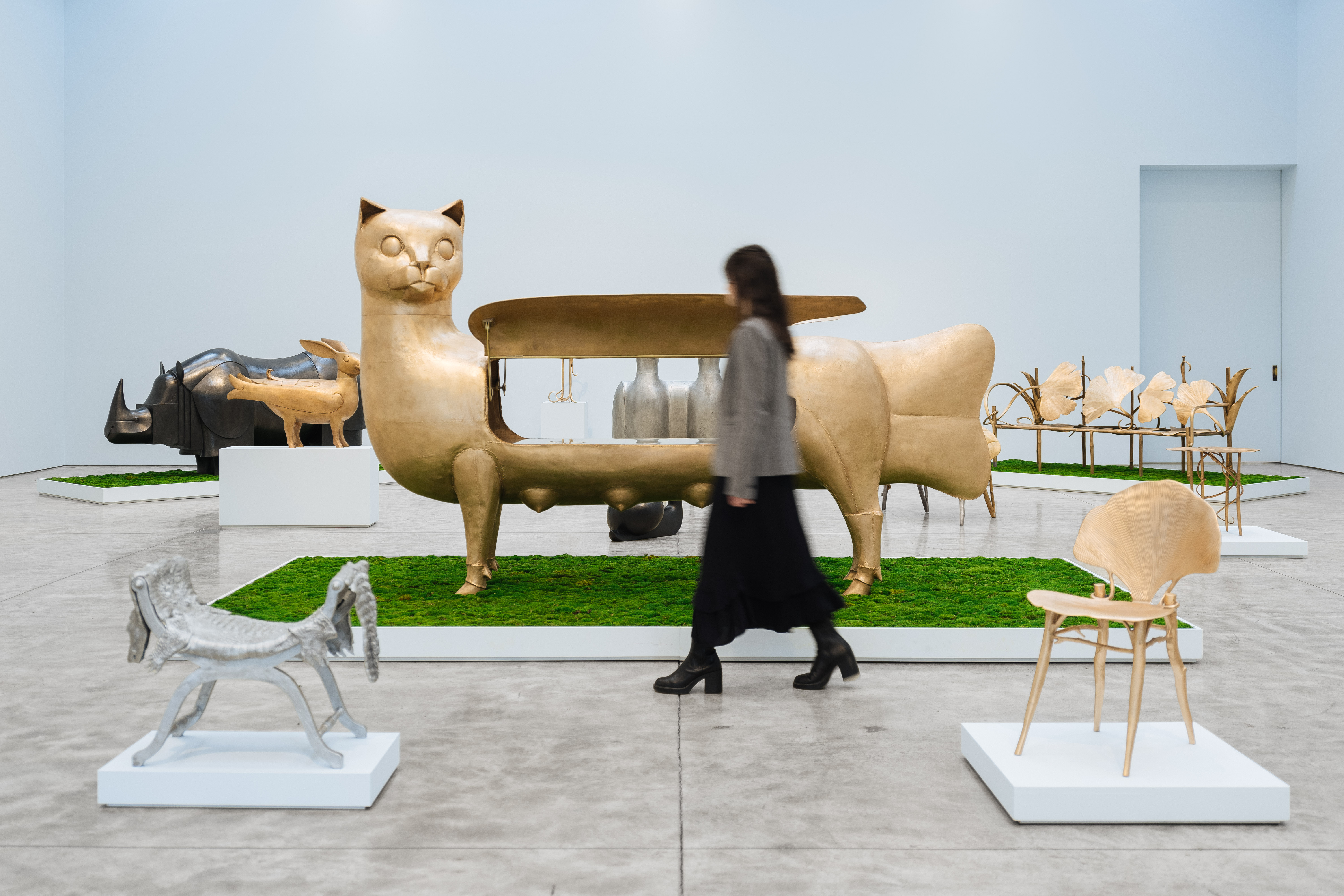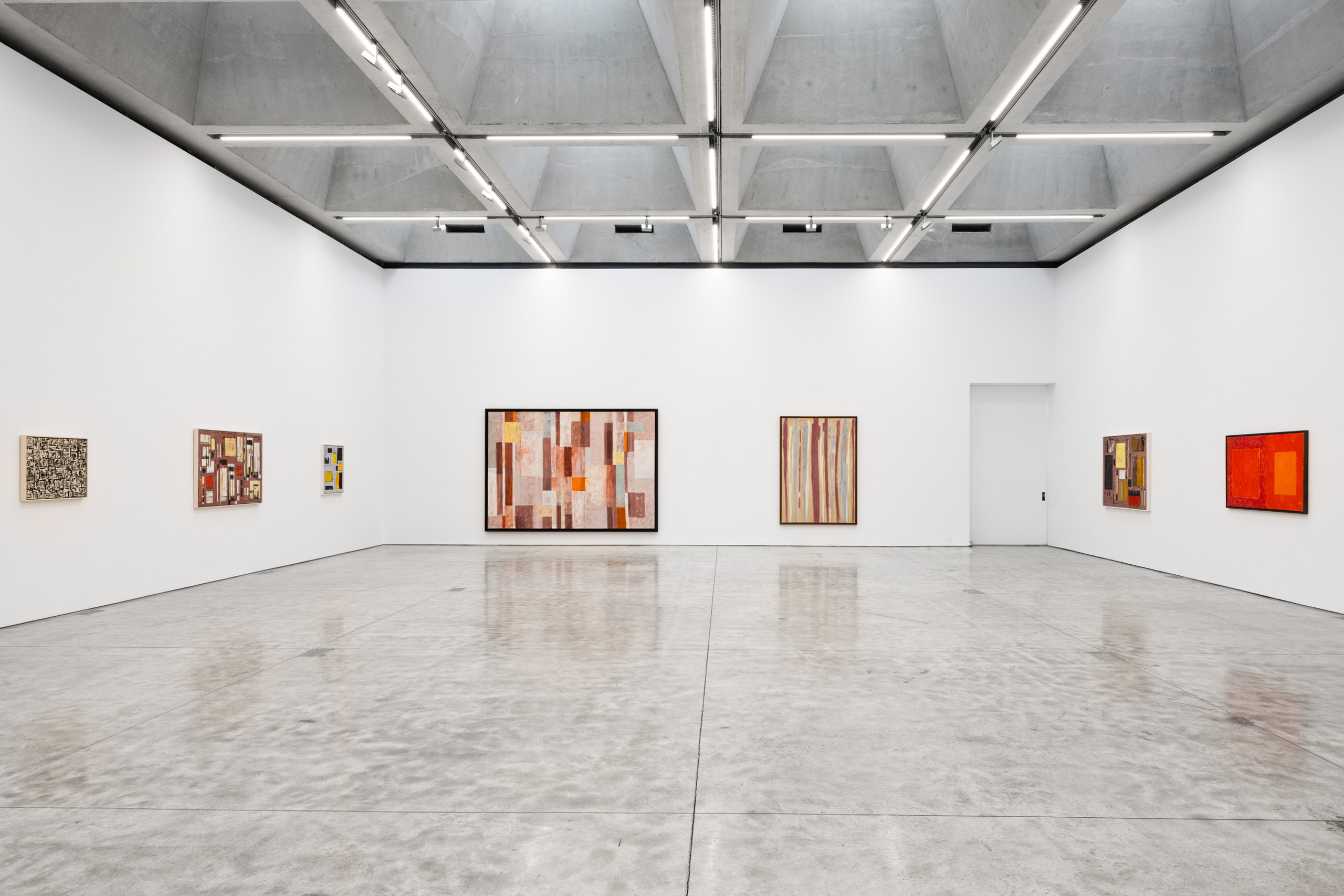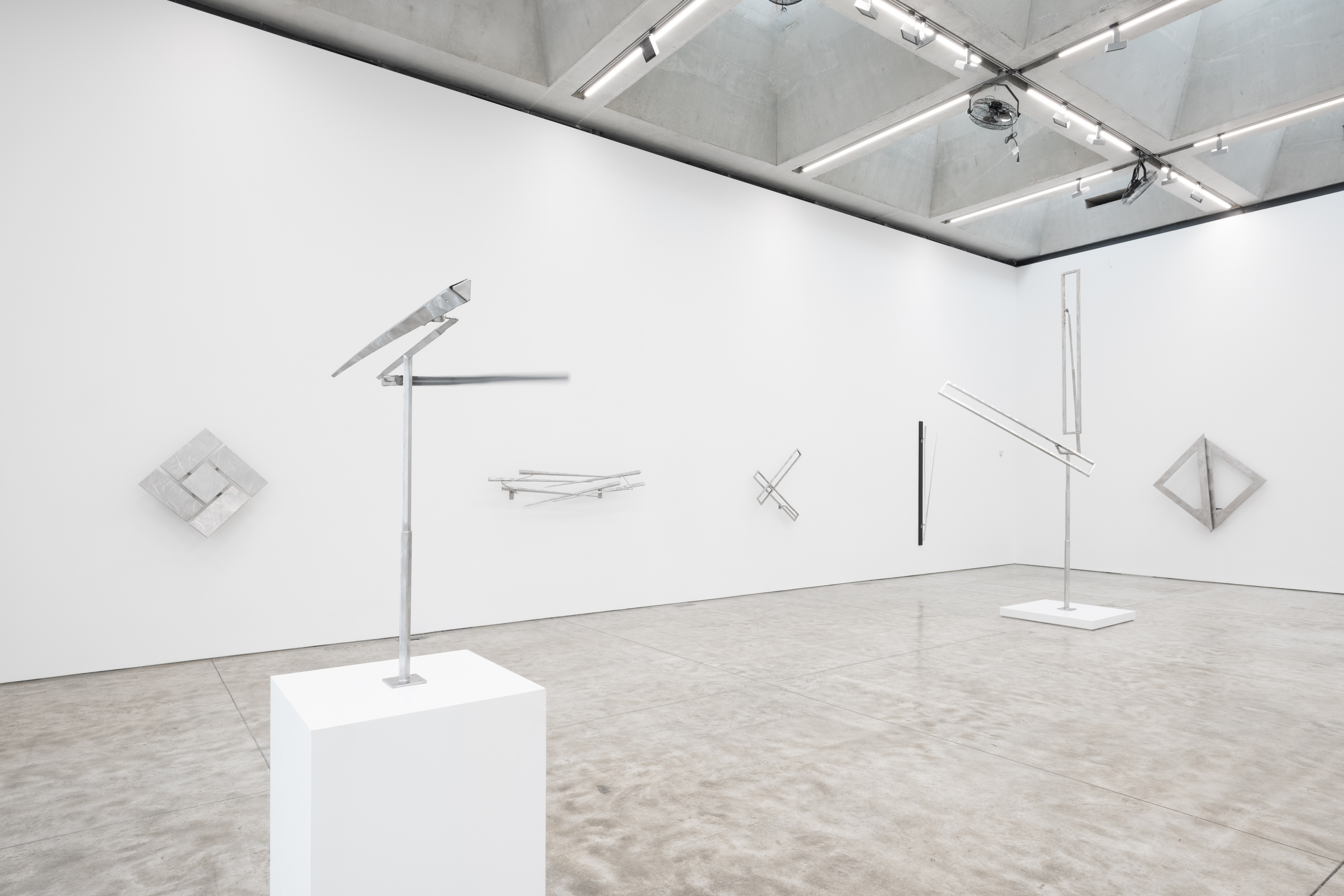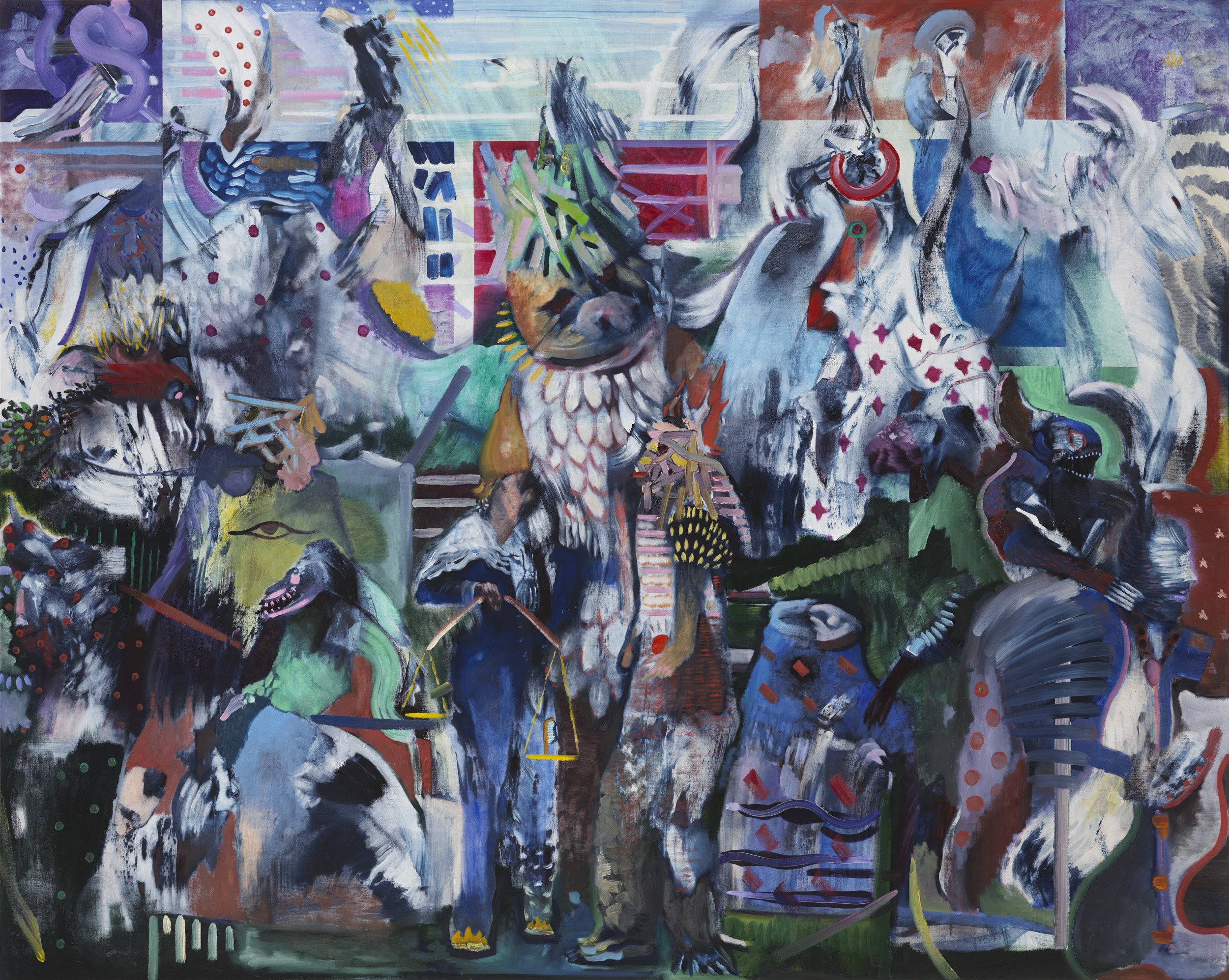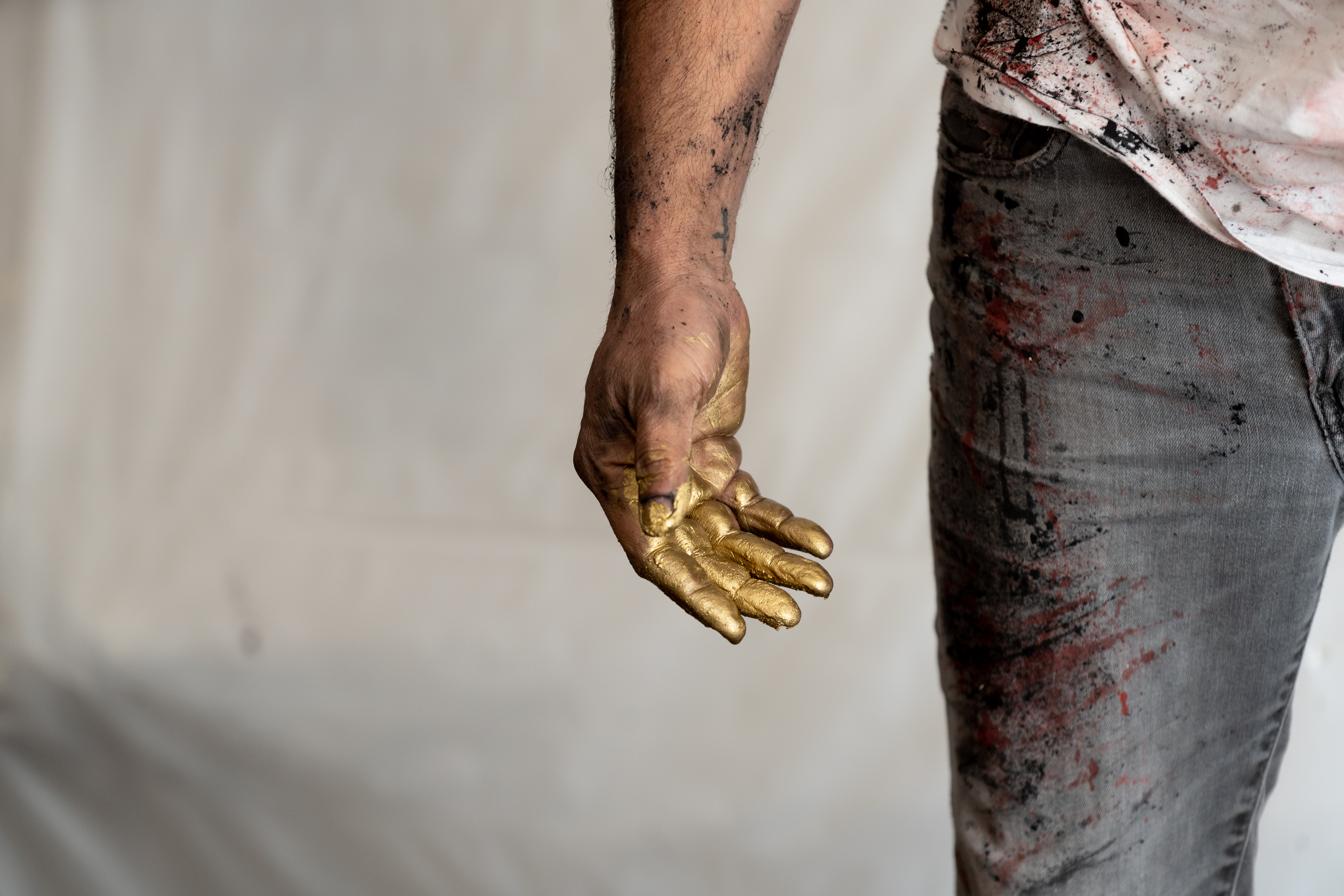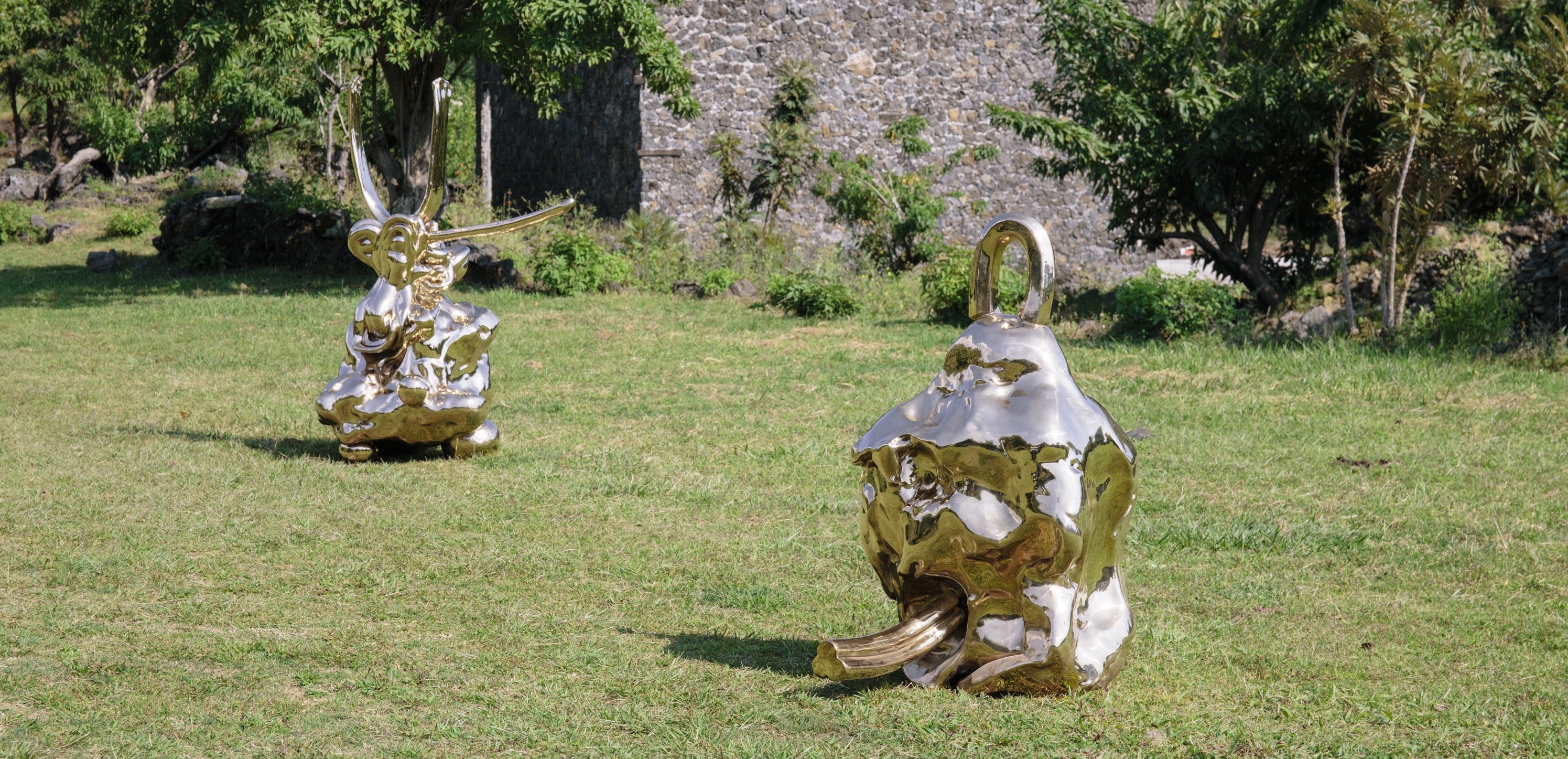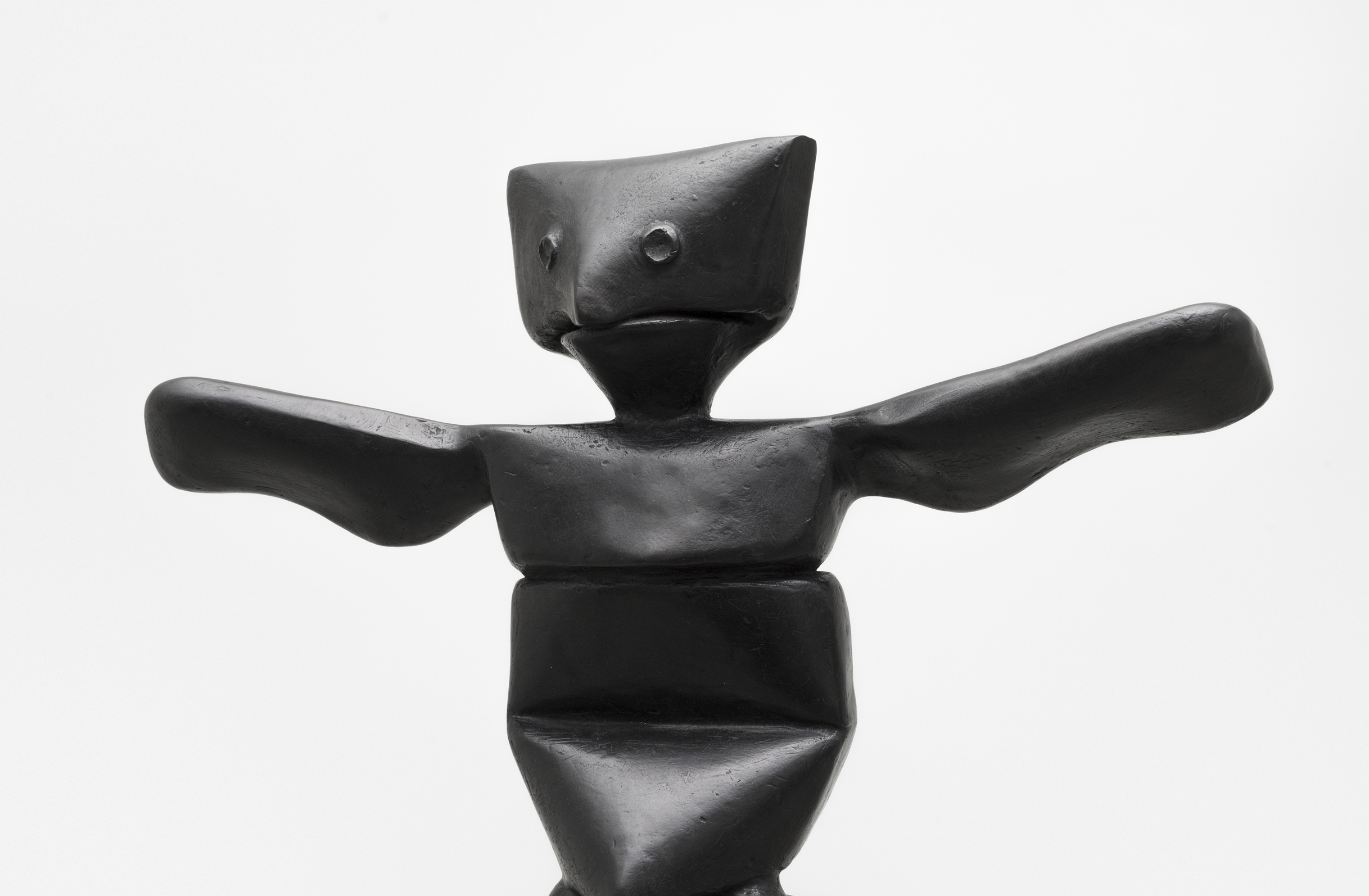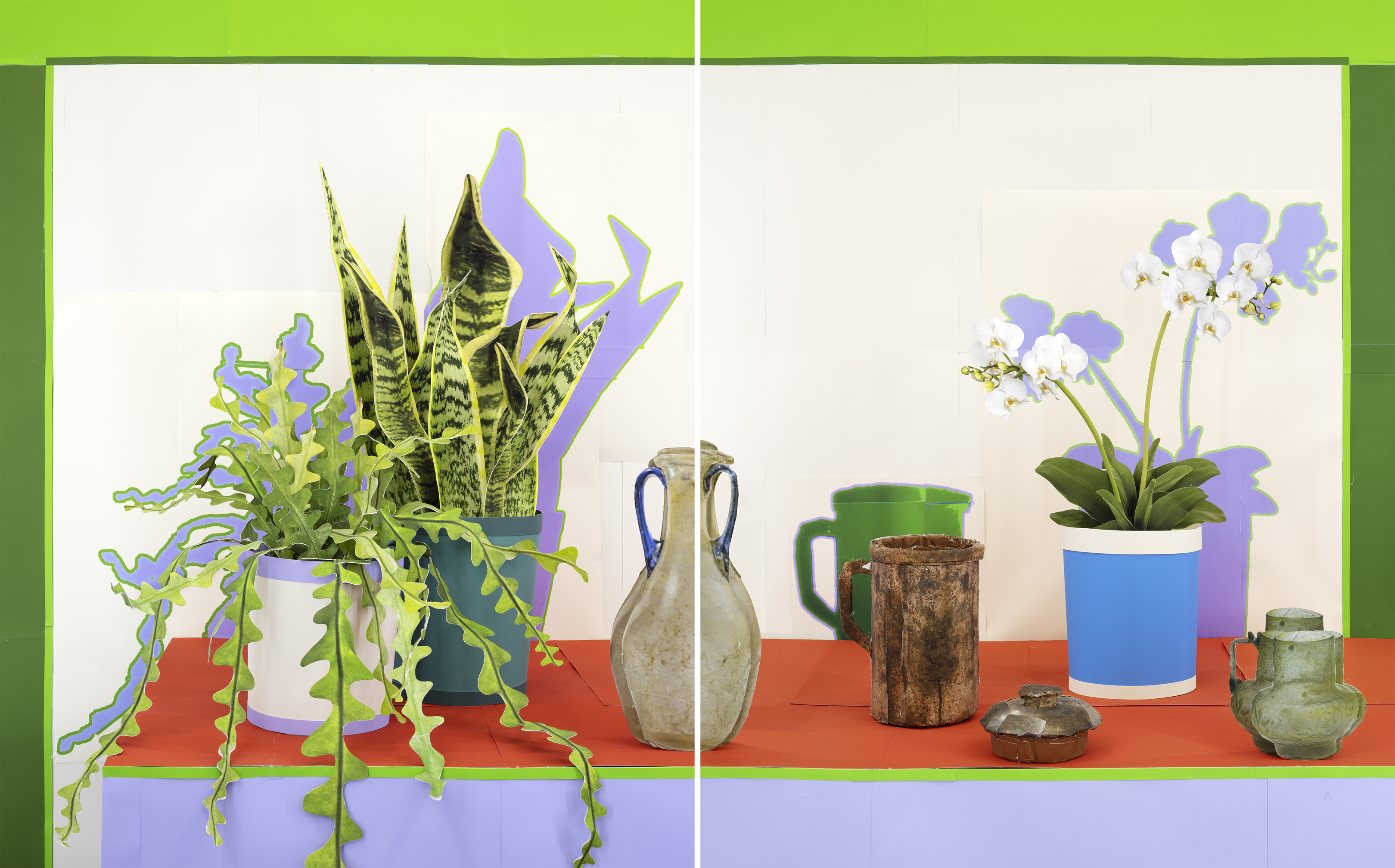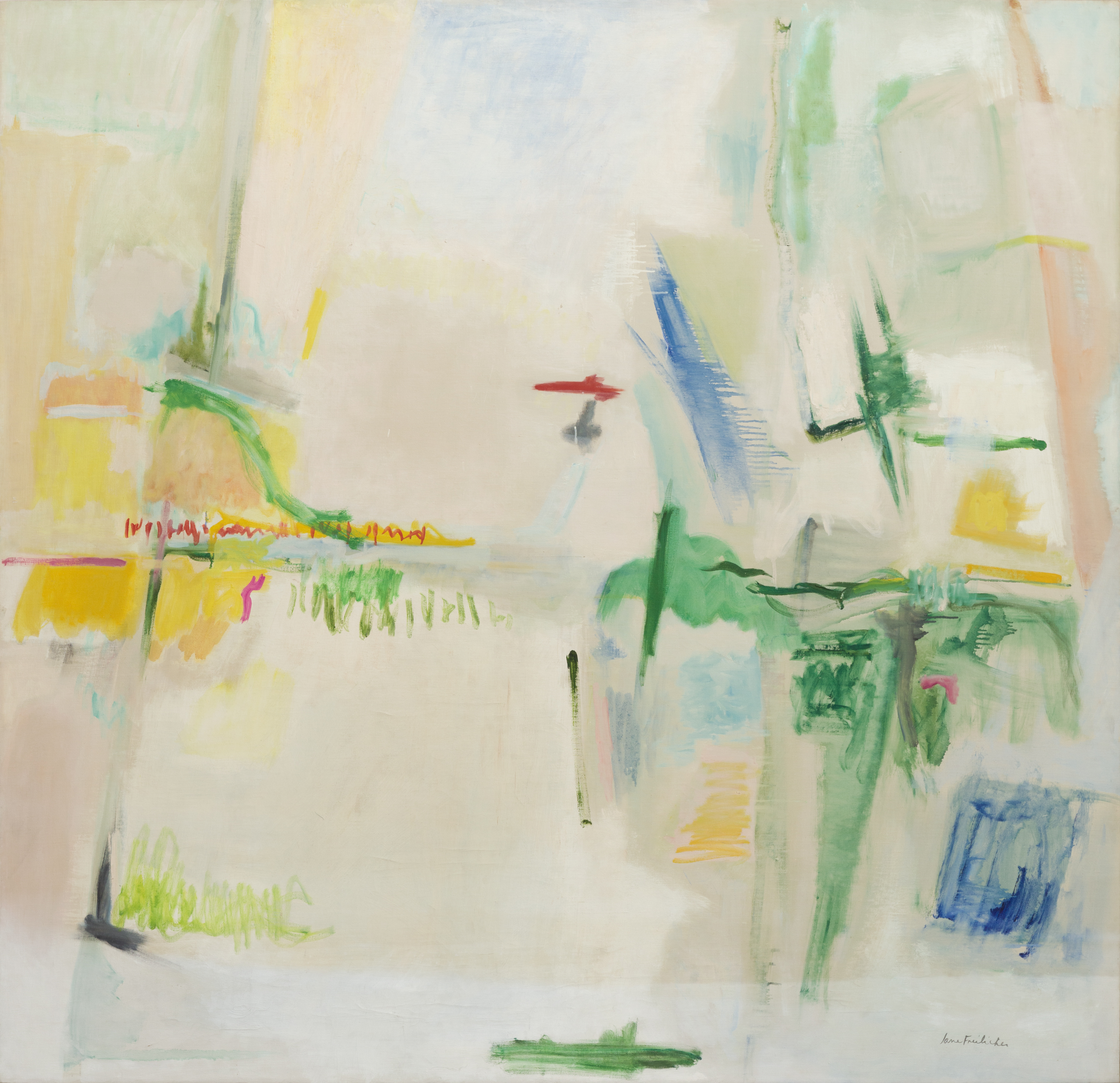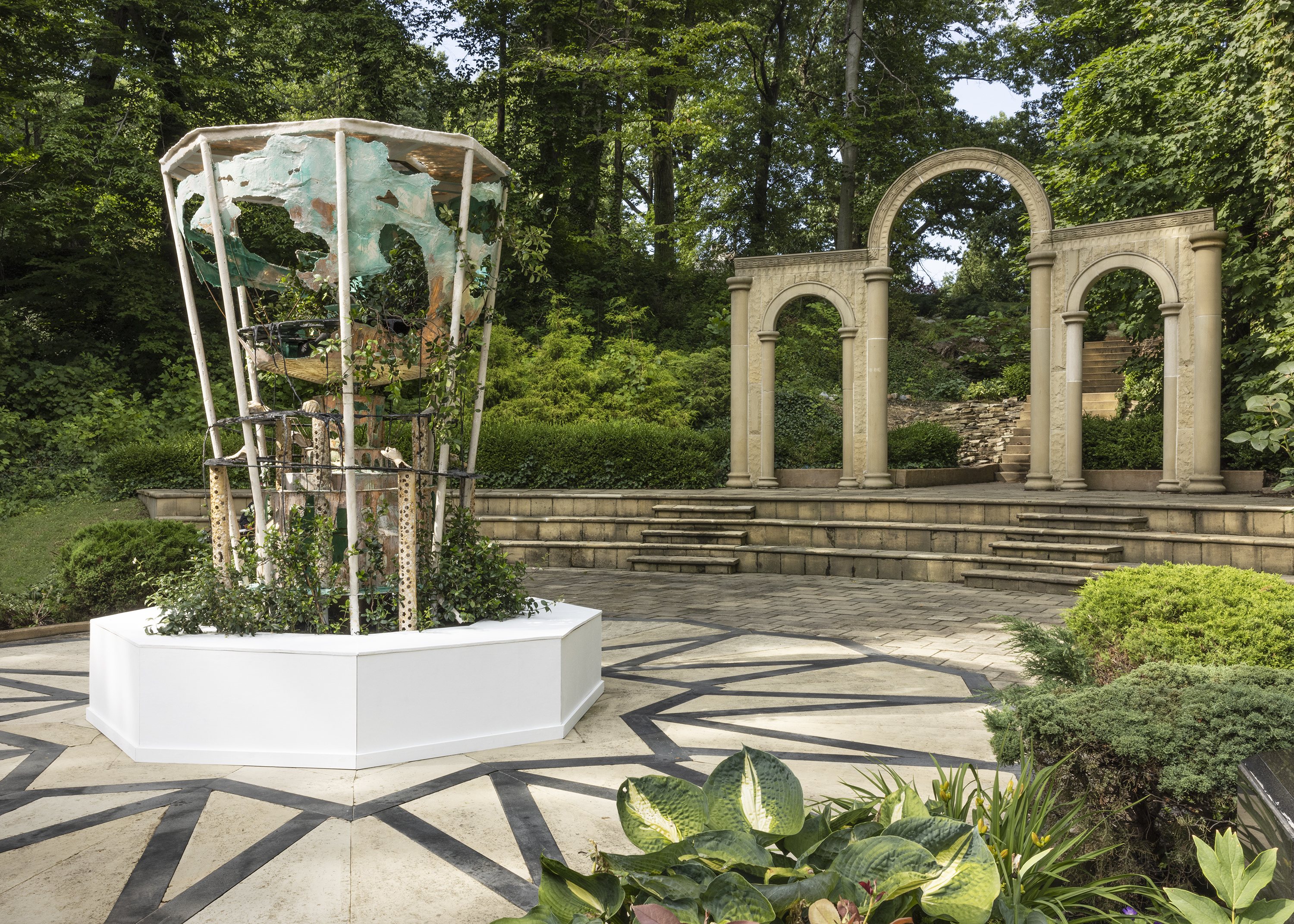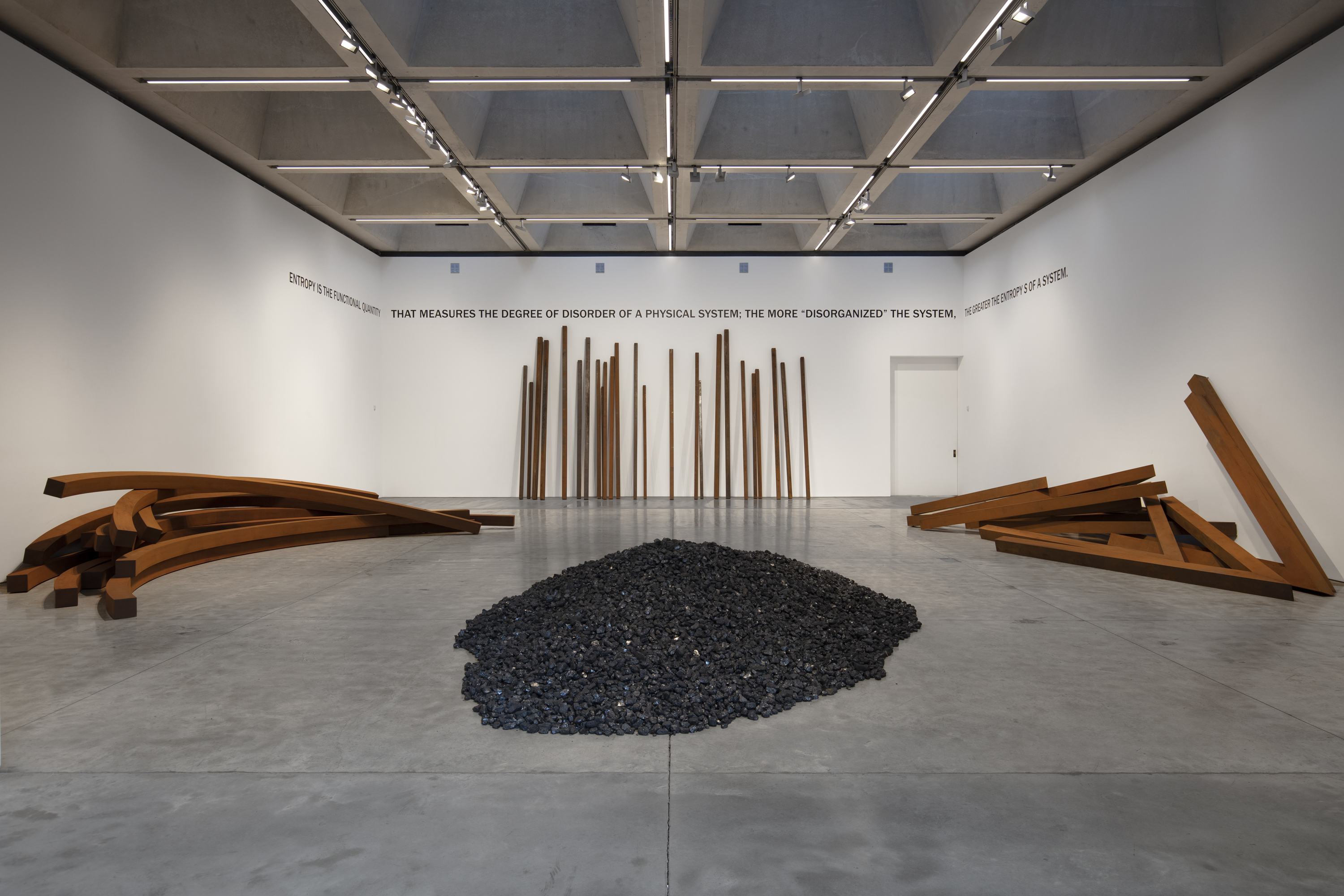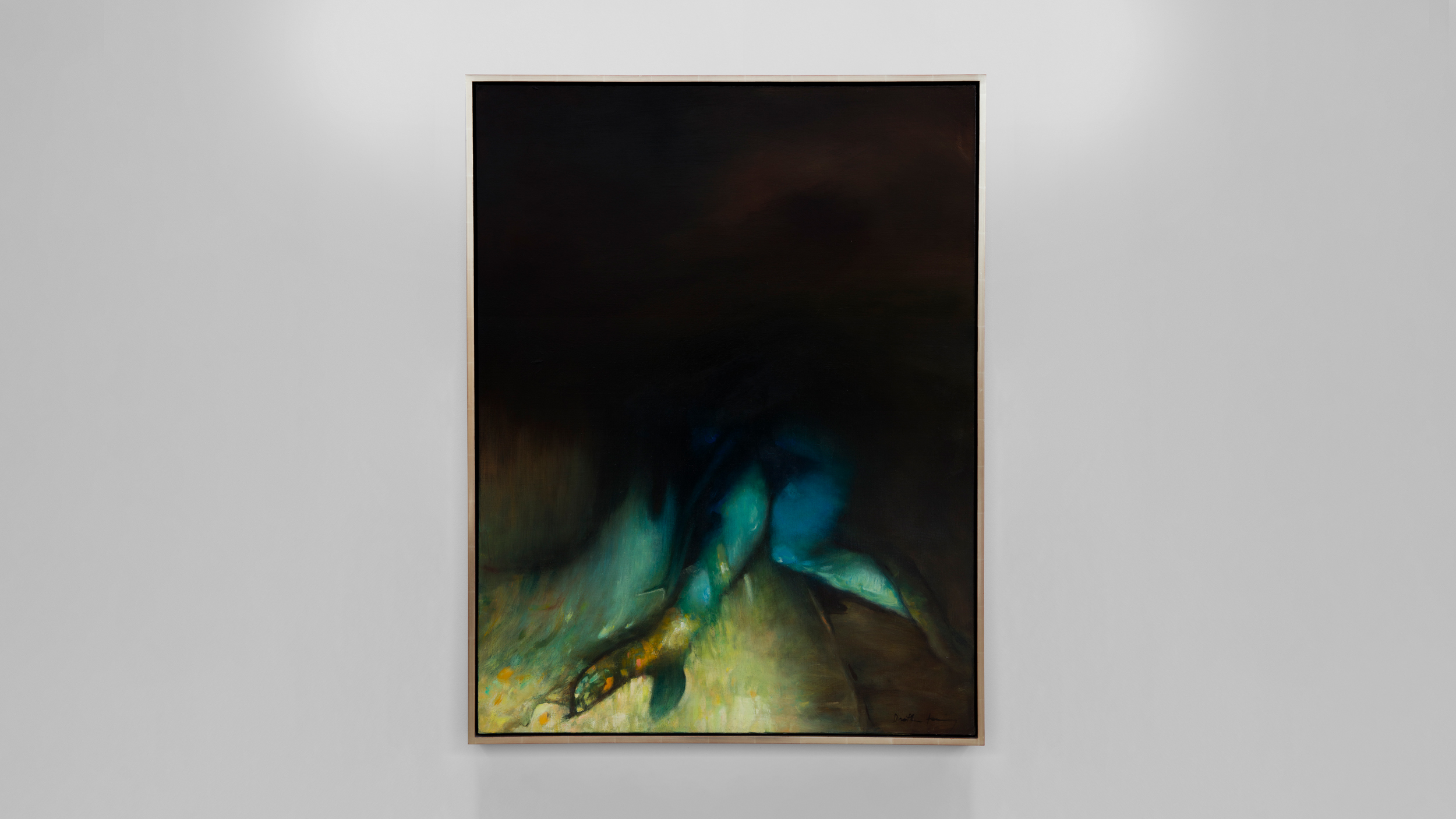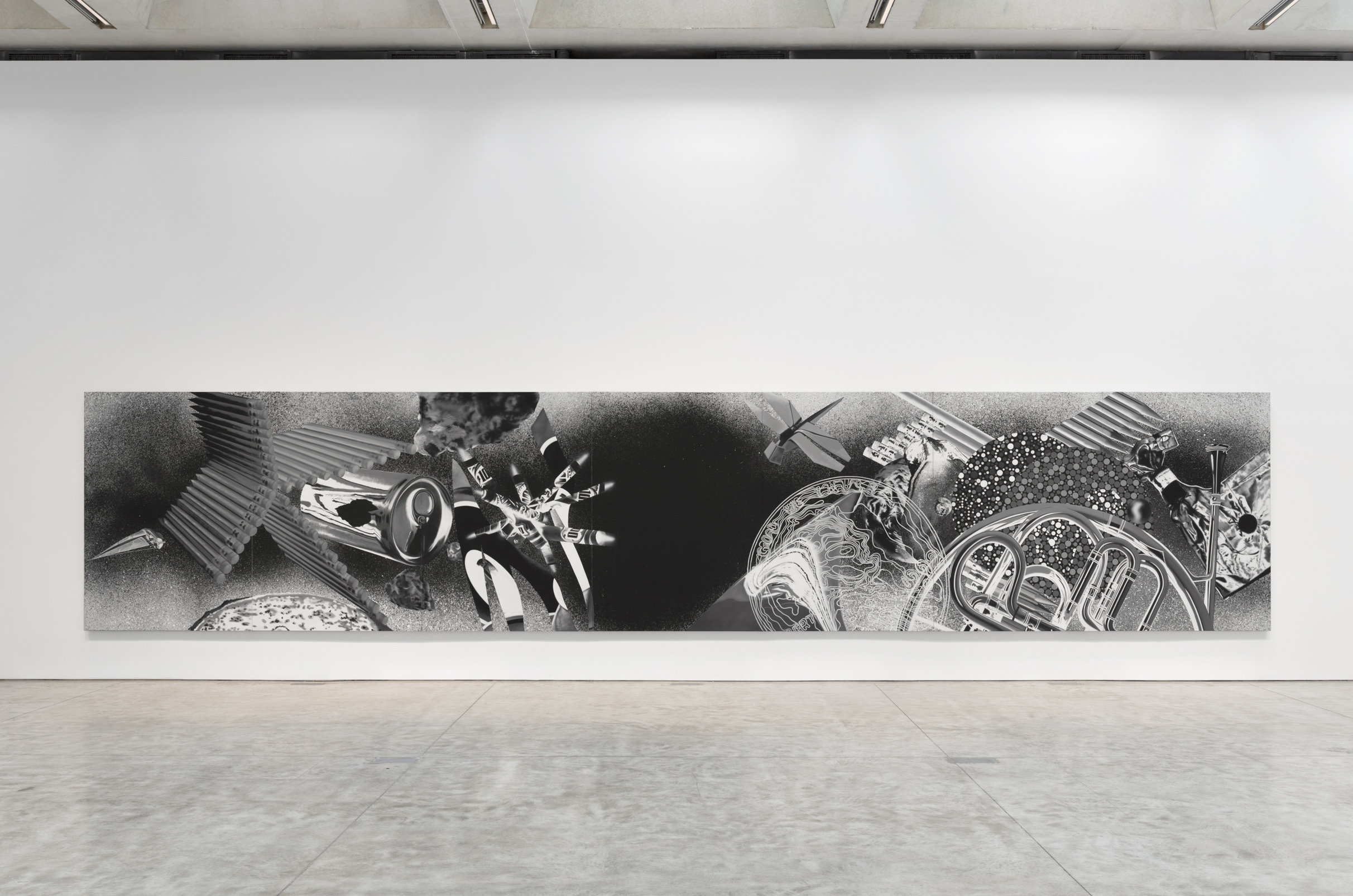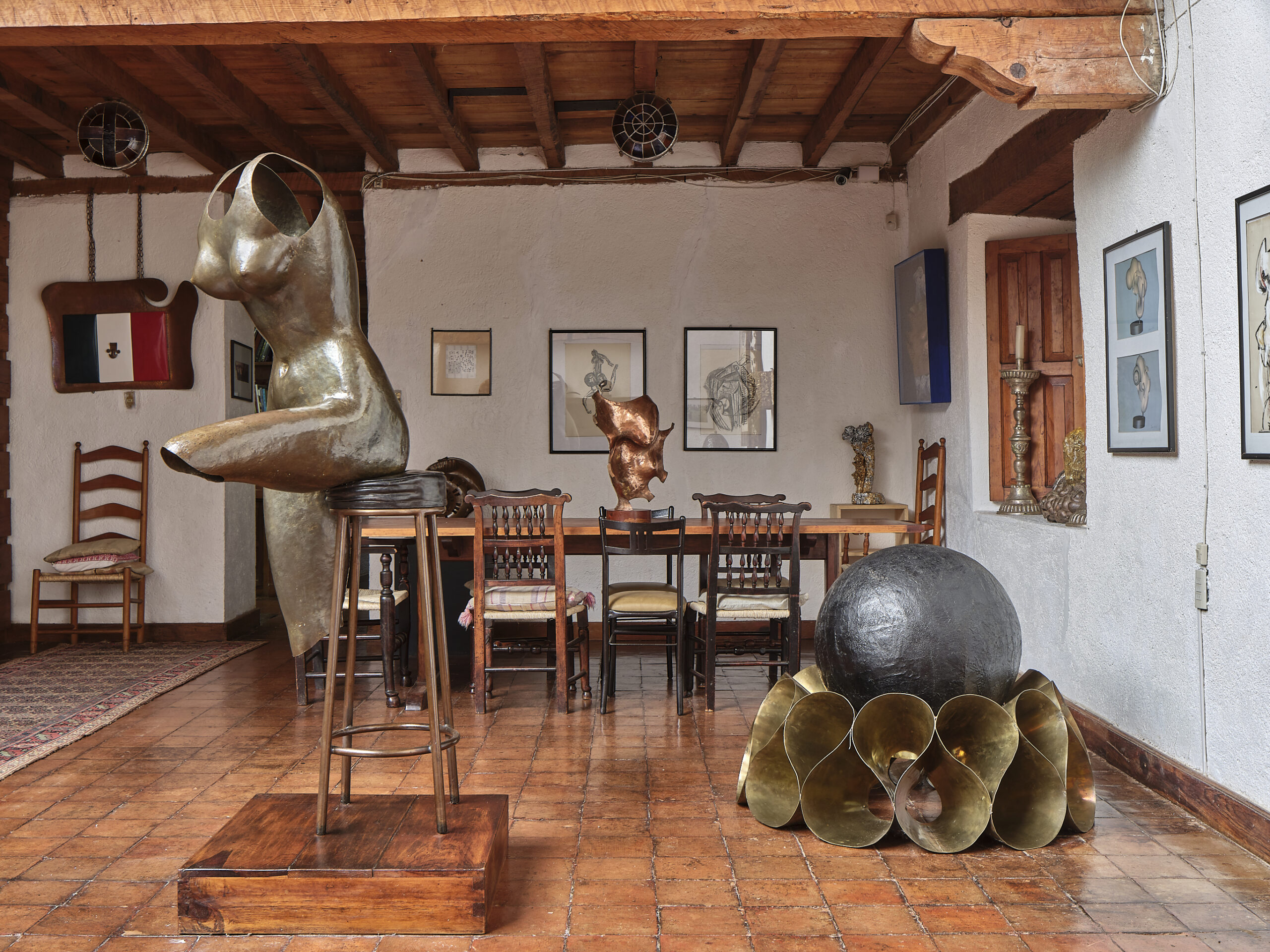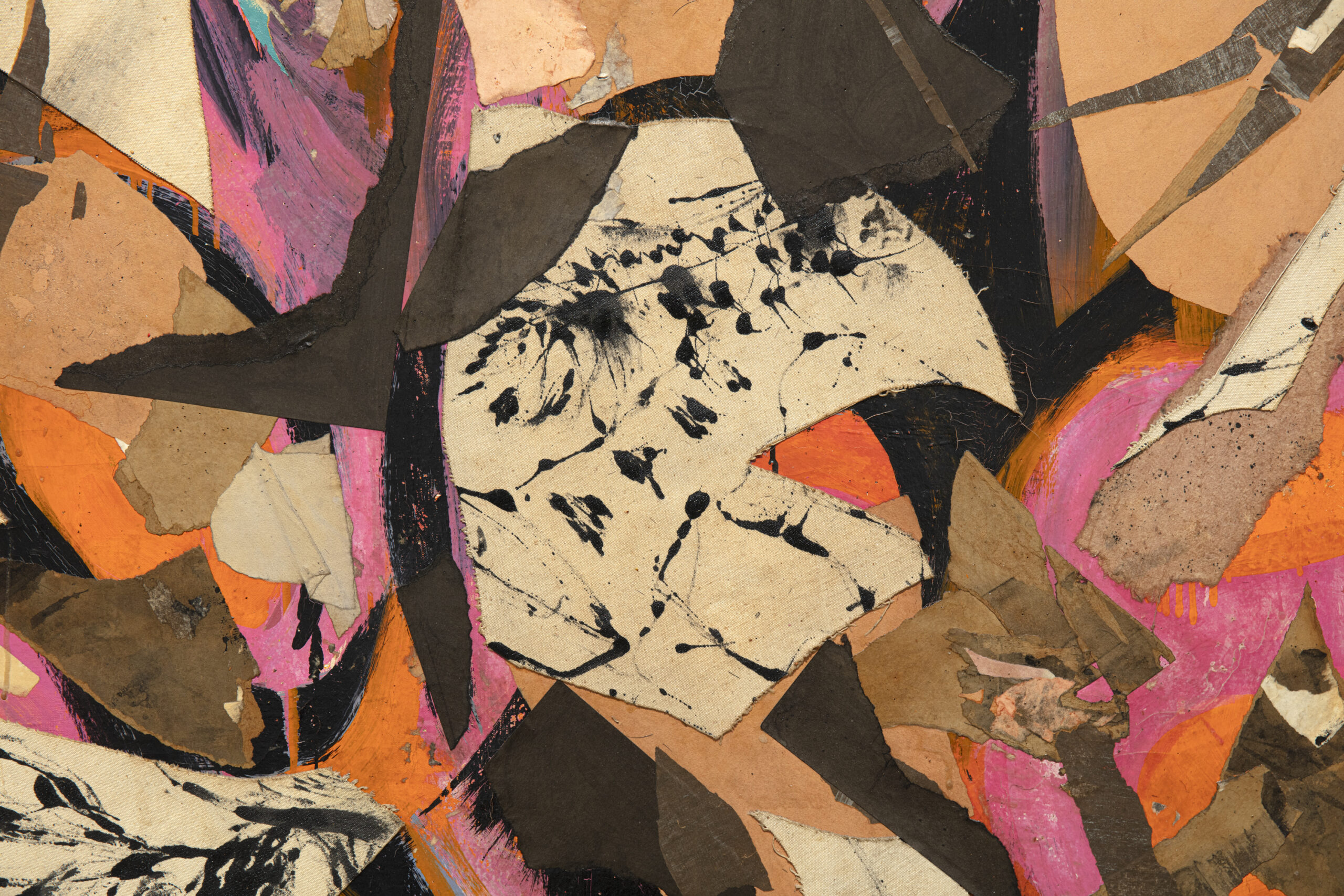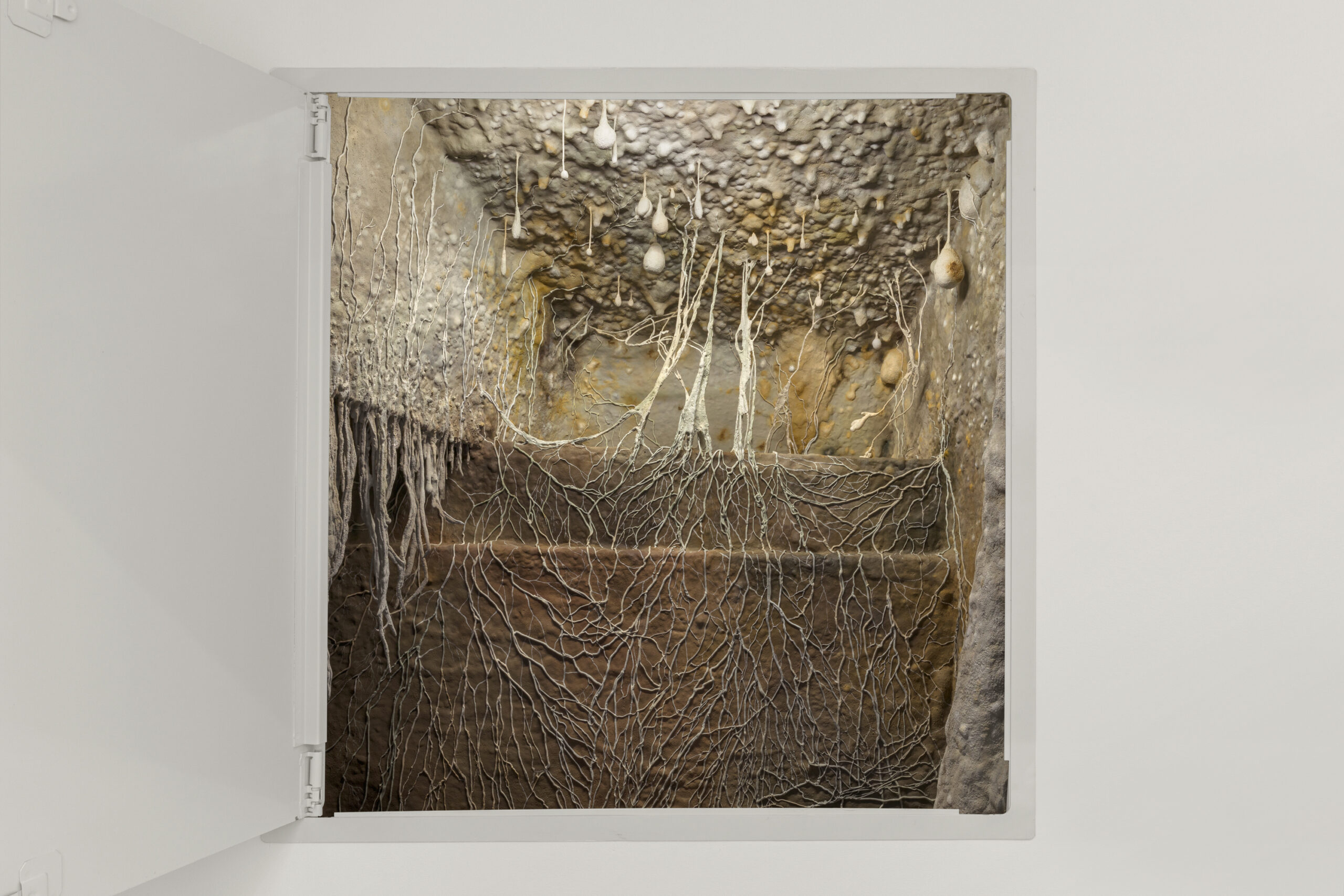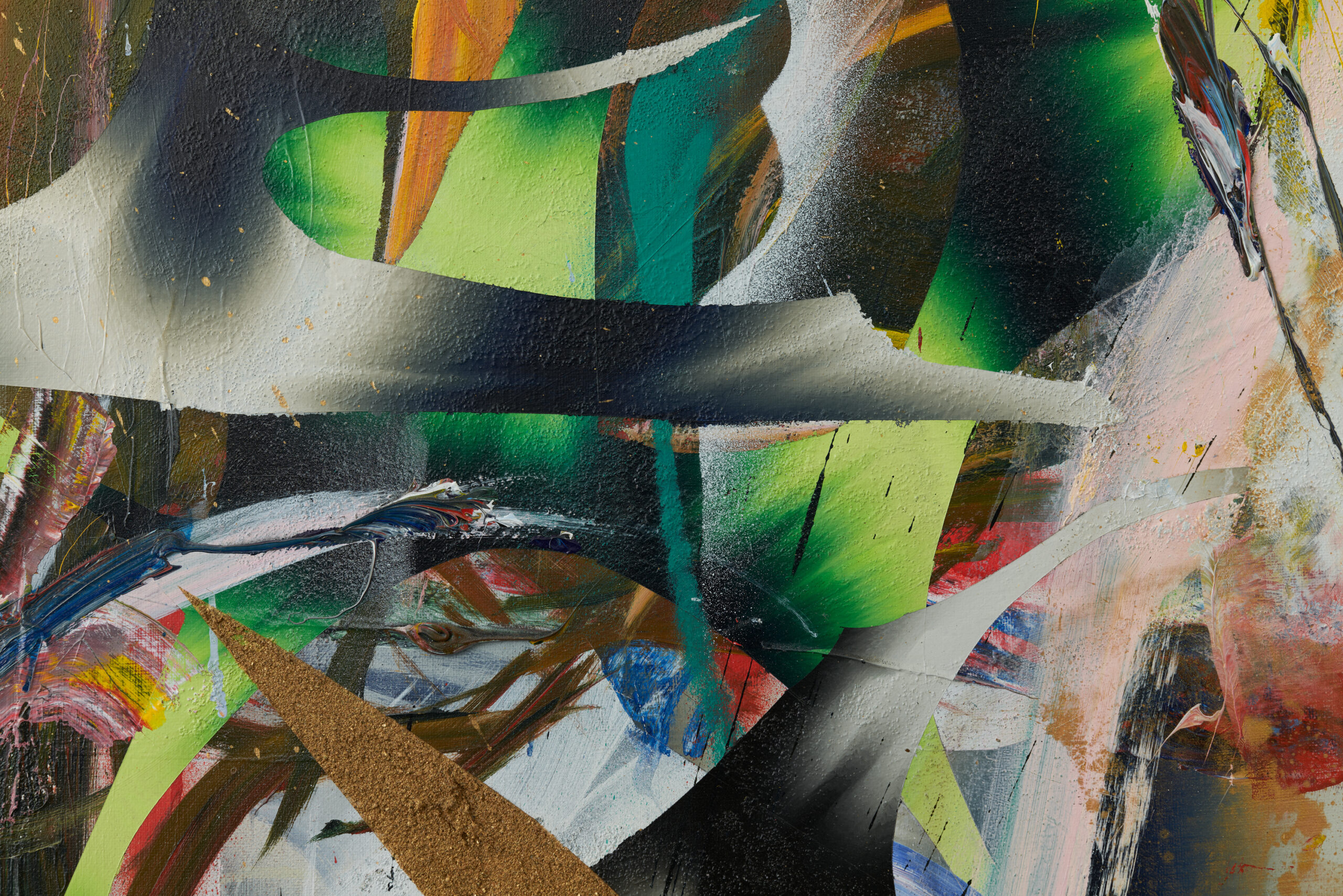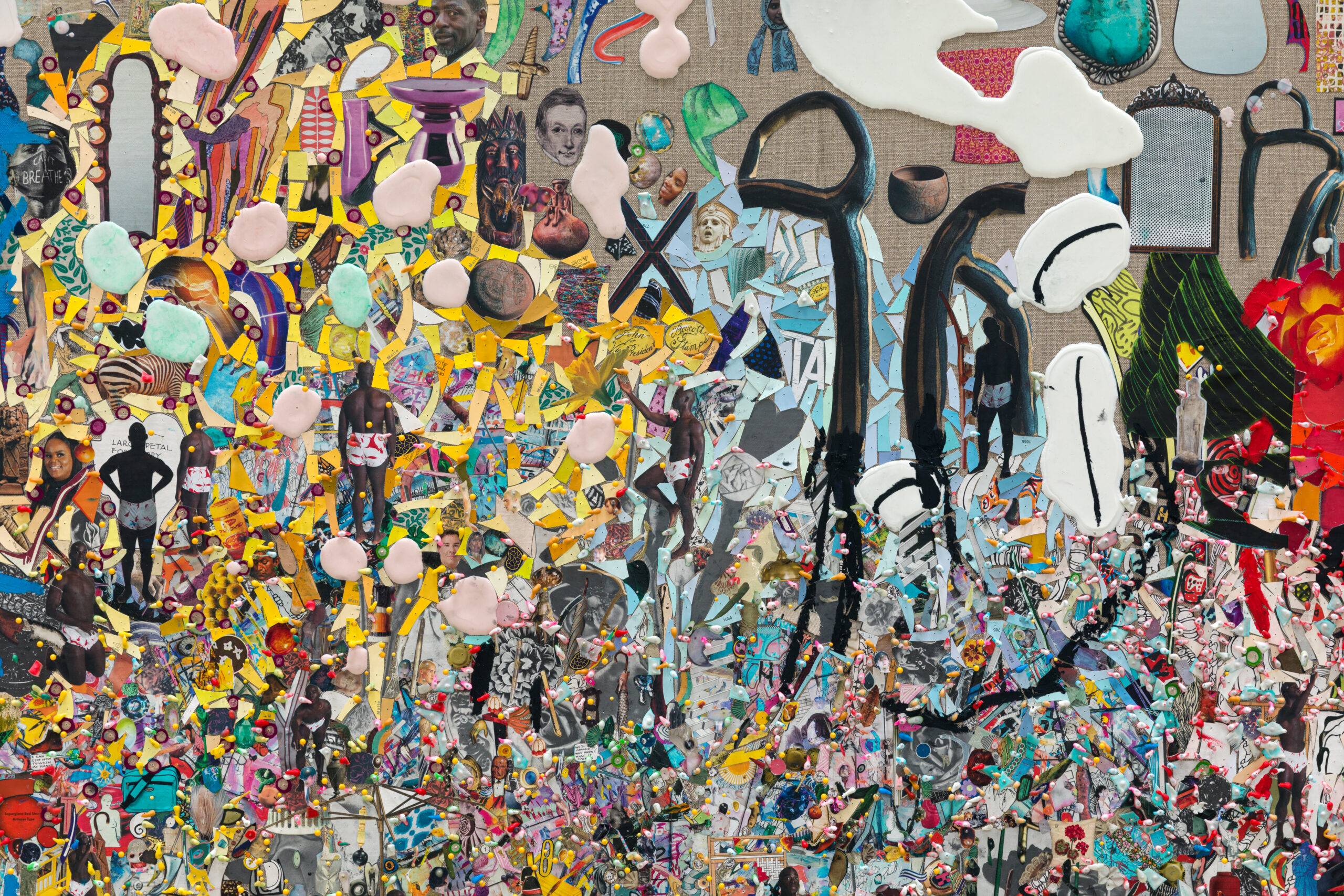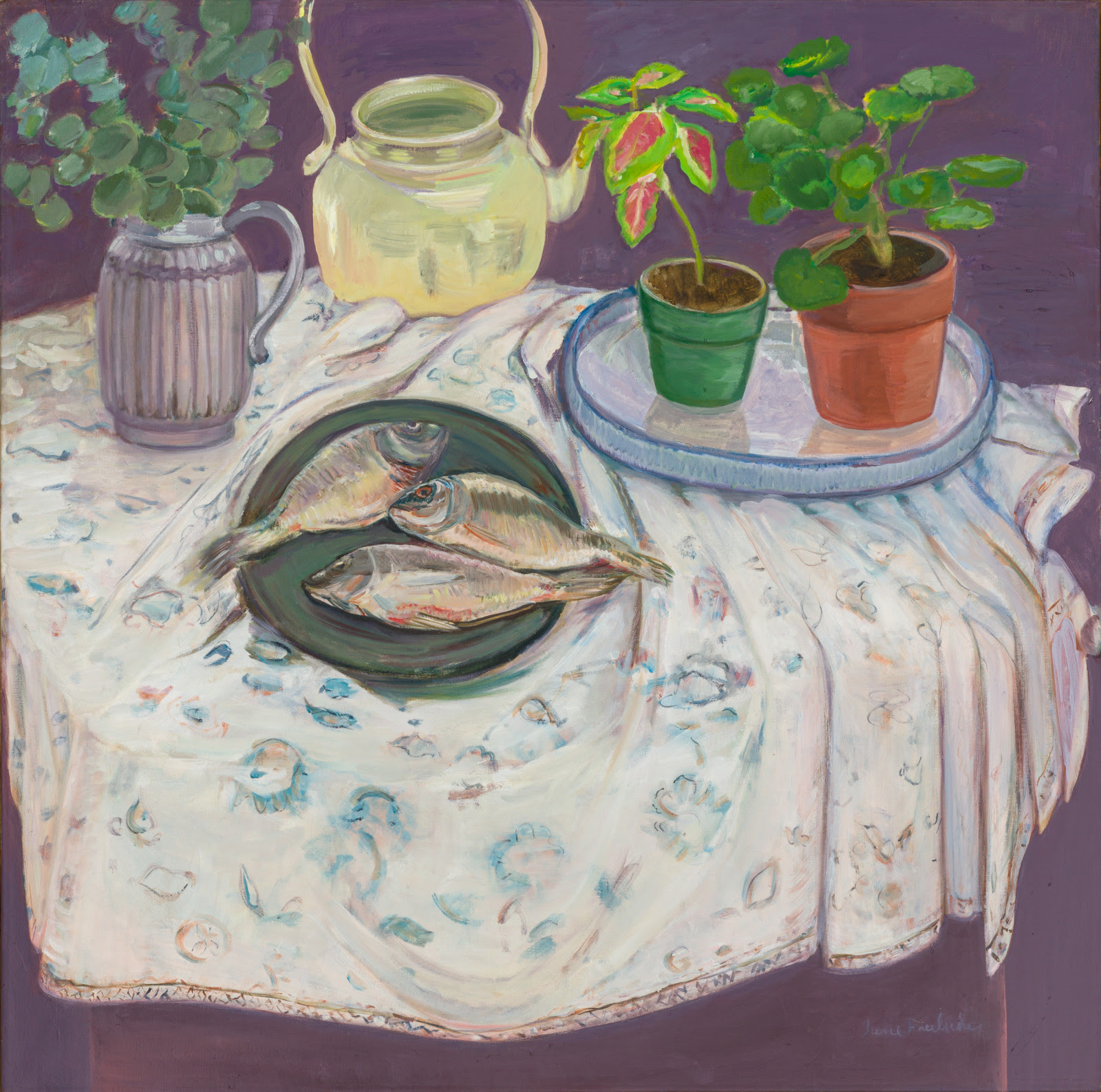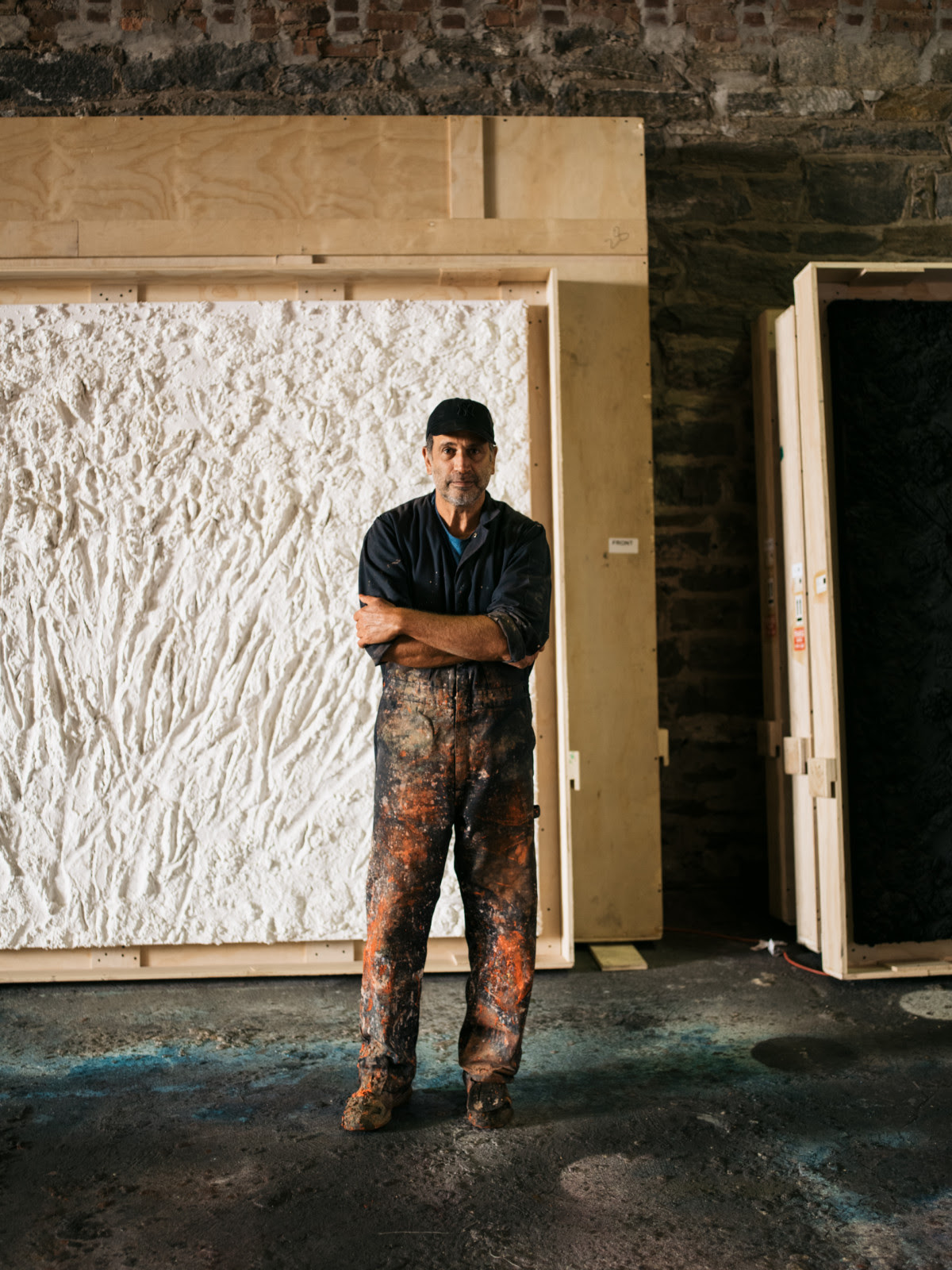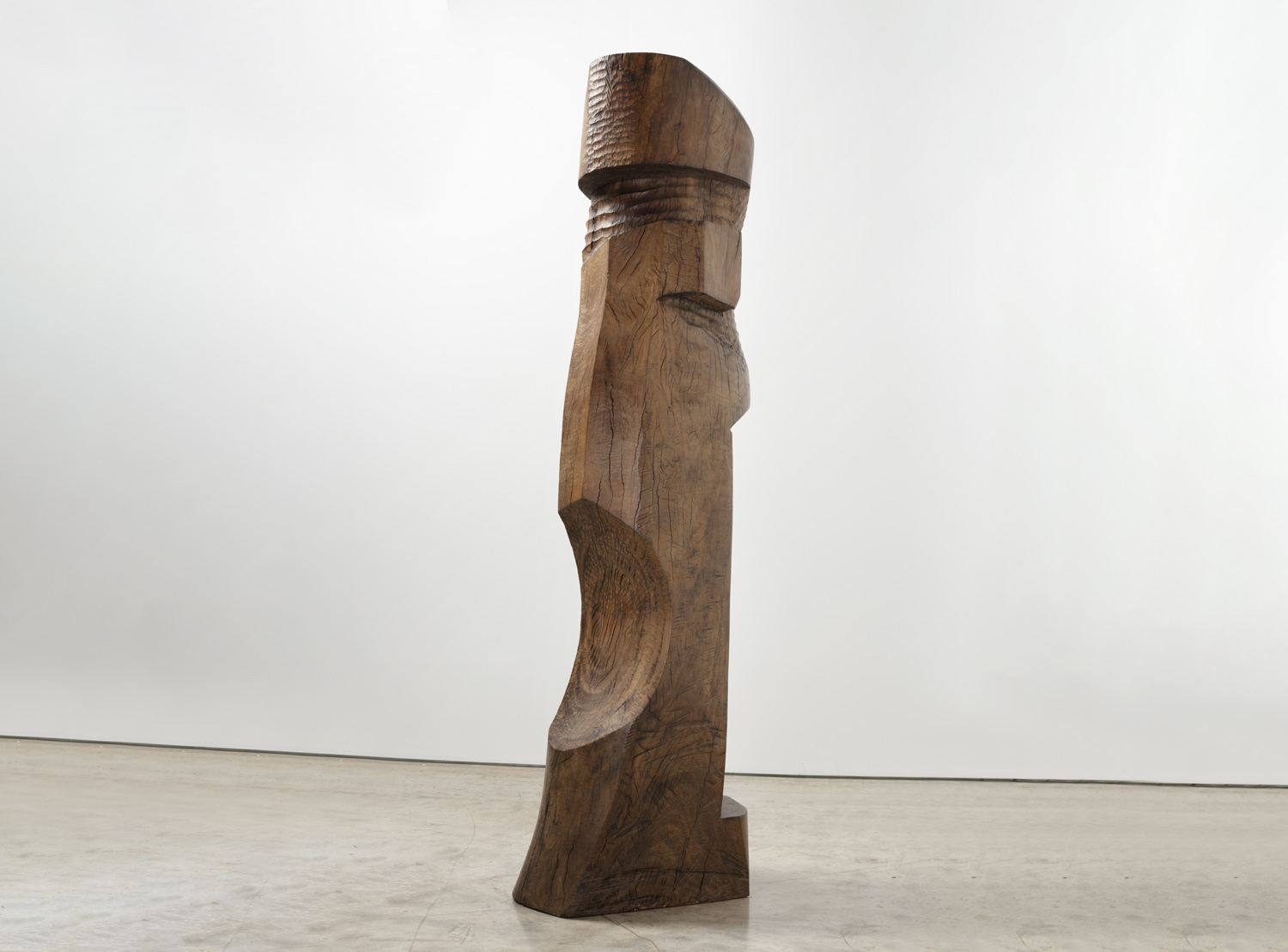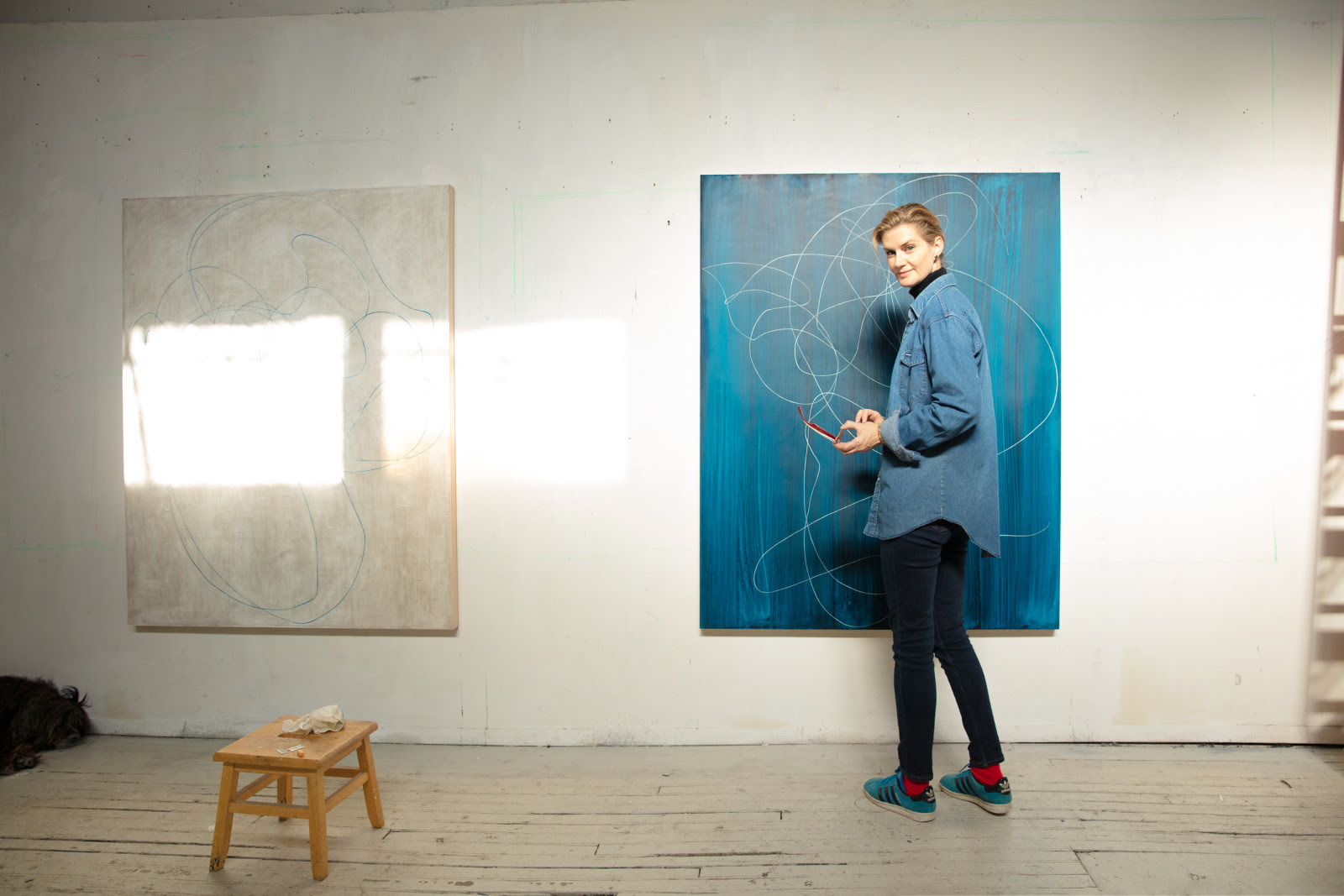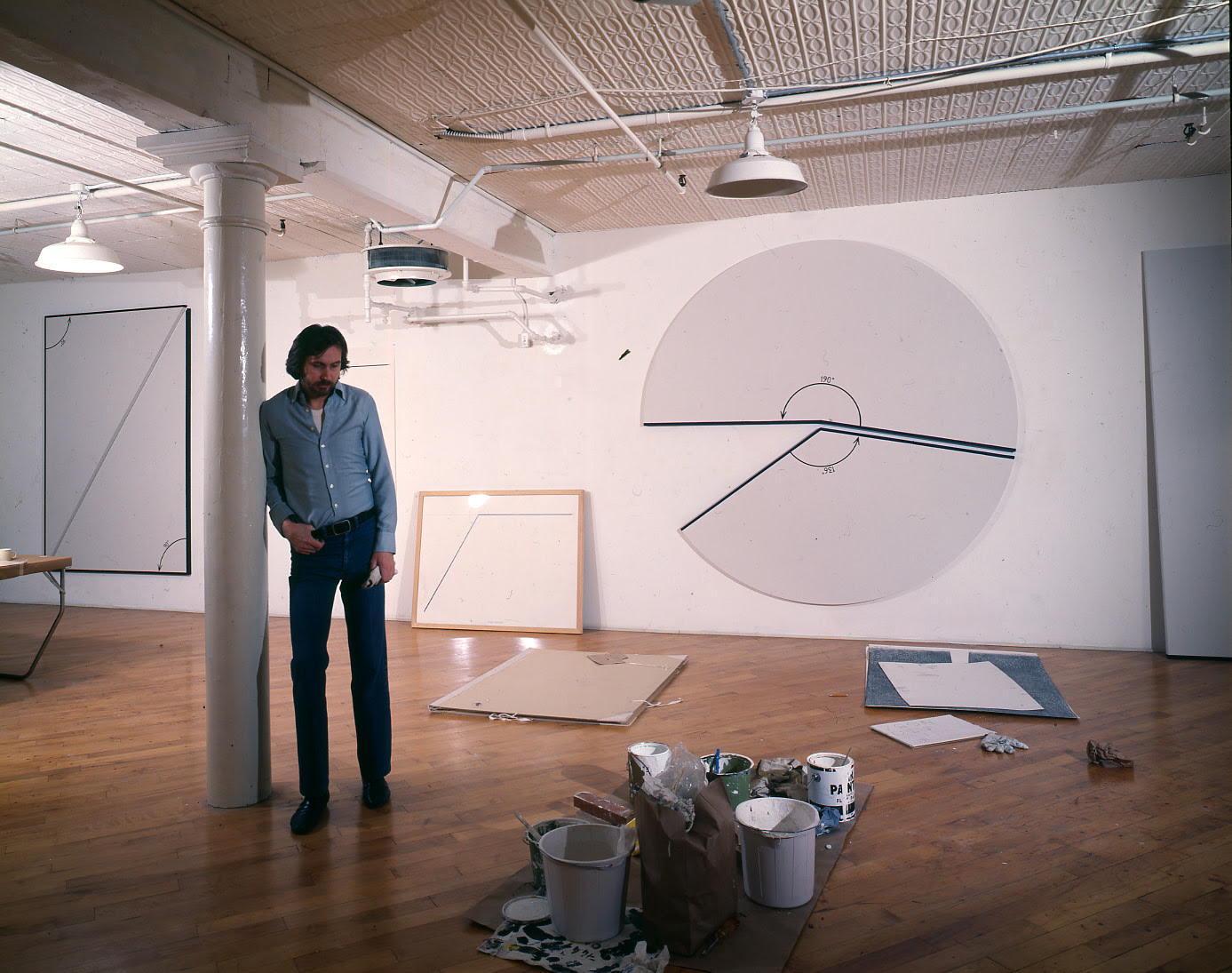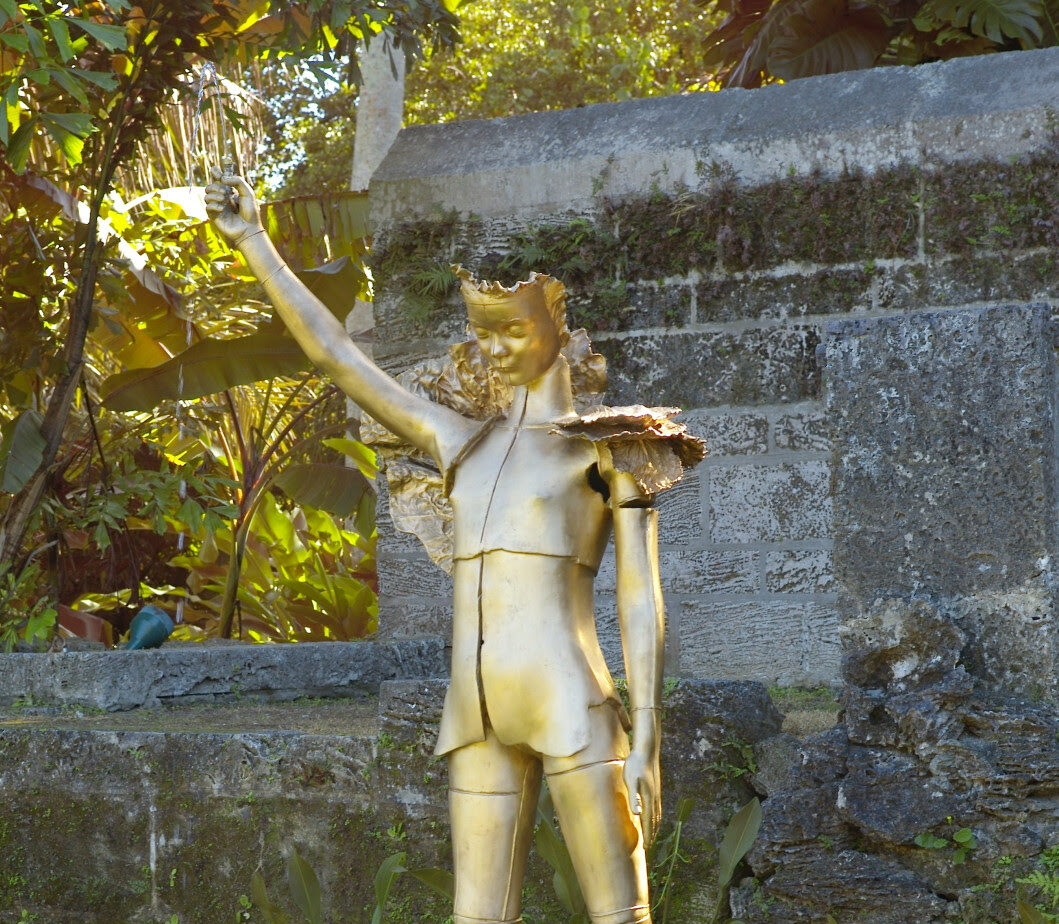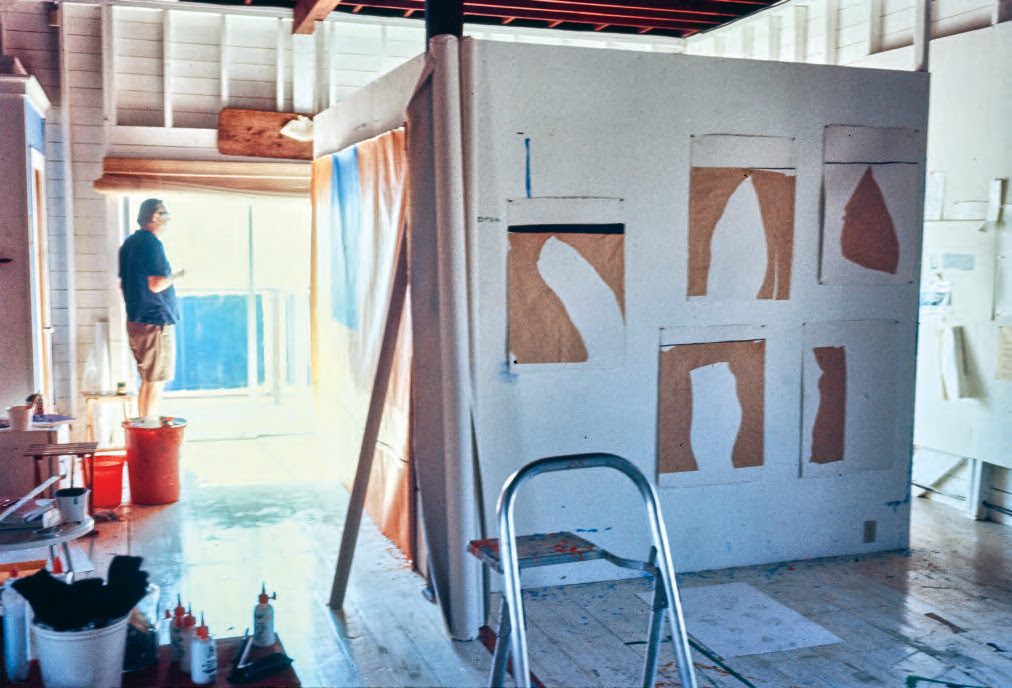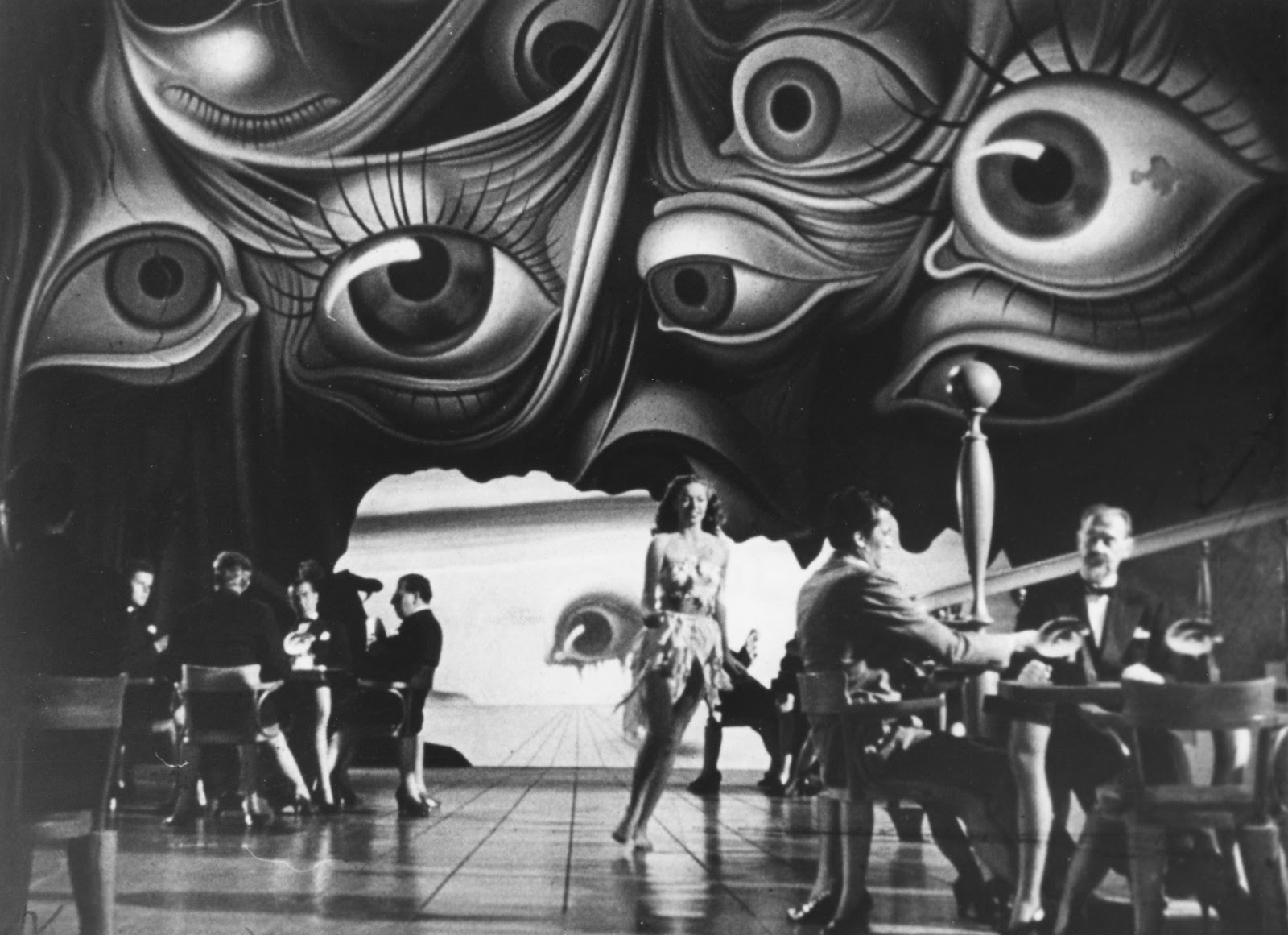These are the paintings of an artist in her late twenties and early thirties, made at a time when, in New York, Abstract Expressionism was the dominant painting style. They reveal Jane Freilicher’s close familiarity with contemporary work by Willem de Kooning and others, from which she has taken what she needed: spontaneity, improvisation, freedom of brushwork. Yet they are conspicuously, willfully not abstract. It’s hard to be sure now whether in her choice of traditional subjects—portraits of herself and of close friends, interiors of her apartment and closely-focused still lifes placed within it—she was looking backward, as she might herself have believed, to her heroes of old-master and post-Impressionist painting, or forward, already predicting with her famous intelligence and wit a time when Ab-Ex would have run its course, and making an end run around her contemporaries. A little of both perhaps. But most directly she was looking inward, beholden to no movement or fad or career calculation, and these earliest of her mature works, set in a small New York City apartment, might be partly understood as illustrating metaphorically that self-sufficient inward gaze.

Freilicher was aware of an inherent paradox, or paradoxes, in her painting, one she identified in conversation with the poet and critic James Schuyler: “I’m interested in landscape, but there’s a paradox: it’s depressing to get that realistic look, ‘Why, that’s just the way it looks!’ or, ‘I know that time of day.’ At the same time I don’t want to really lose the place.” (1)
We tend to forget that in the early 1950s, there wasn’t always a sharp division between painterly abstraction and painterly figuration, and that many artists alternated between the two, including de Kooning, Hartigan, and Freilicher herself, who painted lyrical abstractions for a short time in the early 1960s. Arguably (and no doubt she would argue the other side), she could be grouped with the so called Second Generation Abstract Expressionists who were her contemporaries and, in many cases, friends. There is an underlying congruity of sensibility between Freilicher and someone like Joan Mitchell, say, in that both based their work in “feelings” about landscape, and both exploited the Ab-Ex ethos of improvisation and spontaneity when it came to putting marks on canvas to express those feelings. But while Mitchell’s work came down firmly on the “abstract” end of the scale, or continuum, Freilicher’s is at the “realist” or more descriptive end.

Mitchell’s often quoted statement: “I paint from remembered landscapes that I carry with me—and remembered feelings of them, which of course become transformed,” (2) is echoed in a sense by Freilicher, who described her paintings as coming out of “an apprehension or feeling about something; an inner impulse that wants to be expressed or a sensation of color or atmosphere or arrangement of shapes that will suggest to me that I can make a painting.” She adds, “I go ahead and build a scaffolding of marks and strokes and areas of color which with a lot of revision and editing usually will eventually lead to a realized image.” In the same interview Freilicher said, “I don’t think my paintings are very ‘realistic.’ They have reference to real things in nature, but they have their own objective life as paintings, not as imitations of other things.” (3)
Reviewing Freilicher’s first solo exhibition in 1952, Fairfield Porter wrote, “Jane Freilicher seems to be trying to rediscover first principles. Her painting is traditional and radical. She is consciously imitative of the masters of the Renaissance, but in a first-hand way… These paintings are broad and bright, considered without being fussy, thoughtful but never pedantic. The subject may be immediately obvious, or, as in Figure on a Bed, at first sight apparently something else. Reading from the top down, the figure looks like clouds in a greenish-blue sky, the bed like the opposite banks of a river landscape, the floor and dog below like the river and far shore.” (4) Certain paintings in the present group are like the works Porter described in that they too give an impression of things that may not be exactly what they appear to be. Interior (1954) and its larger version on paper (1953) take the room—or interiority perhaps—as their subject, yet at the same time call into question that very notion. Like the Figure on a Bed morphing into a landscape cited by Porter, the image suggests a hybrid of room and landscape: a door in the back wall gapes open to reveal a slice of undefined, perhaps infinite, space beyond, walls are activated with white or yellow scumbled areas of brushwork which has the effect (perhaps contrary to what was intended) of making them look insubstantial and appear to dissolve into a mist, while the ceiling and its globular light has become a sky, with clouds and a moon. The illusion of a porous physical reality, where inside and outside states coexist, is a bit reminiscent of the 1930’s, surrealist-inflected interiors of Englishman Paul Nash. The effect also anticipates Freilicher’s later still lifes in front of windows—the work for which she is probably best known—in which the outside is explicitly brought in, and the inside is taken out.

Prominent in many of Freilicher’s still lifes of this period are swaths of boldly patterned fabric: an oriental rug on a table beneath an arrangement of vases and compote in Still Life Persian Carpet (1955) or Peonies on a Table (1954); a Spanish shawl draped over the back of a wicker chair in Flowers in Armchair (1956); and both a draped shawl and a table cloth in Still Life with Calendulas (1955). The image of a Persian or Turkey carpet on a table beneath a still life arrangement is a frequent convention in 17th century Dutch still life painting, while the challenge of rendering multiple materials, textures, degrees of reflectivity or transparence represented by the silver coffee pot, glass compote, sea shell, fruit and flowers may also allude to the technical virtuosity and material variety of Dutch Golden Age still life painting.
However, Freilicher stated that she intended no explicit reference to Dutch painting in these still lifes, and included patterned fabrics simply in order to enliven different areas of the composition. (5) The Modernist idea that all parts of the painting should be “active” goes back at least to Cézanne, and was carried forward by Matisse who used patterned fabrics (and at times deliberately “awkward” composition and paint application) in ways that anticipate Freilicher. Like Matisse, Freilicher seems to enjoy replicating fabric patterns as “found” imagery in their own right: a flat alternate visual reality that momentarily contradicts the spatial illusion of the room. This is particularly the case in the theatrical Still Life with Calendulas, where a large patterned shawl or coverlet draped over a room divider, and another floral patterned cloth cascading down the front of a cabinet, together occupy almost three-quarters of the image area. The actual calendulas all but vanish against the painted floral pattern they seem to recede into, setting up a witty badinage between the painted and the “real,” but also painted, flowers. Sun-struck floorboards at the right lead back to a vague, dark doorway which the drapery parts expectantly to reveal, like a trompe l’oeil curtain.


Juxtapositions of different visual registers will occur regularly through her later work, in the occasional quotations of Watteau’s Mezzetin and other old master paintings, for example, and most often, in the way she will paint an interior with a still life in front of a window through which a landscape or cityscape is seen. The landscape of course is actual and rendered in perspective, but it is also two-dimensional in that it is “projected” onto the window glass and demarcated by the frame. As far as the painting knows, the landscape is on rather than beyond the window, and as such resides in the interior.
The theme of still life placed in front of a window onto the outside world makes an early appearance in Early New York Evening (1954). A vase of Siberian irises sits somewhat precariously on a window ledge in front of a view of the city, where lights are starting to come on in windows and reflect up from the streets between buildings, and a grey blue dusk remains in the sky. Silhouetted at the horizon, four tall industrial smoke stacks visually echo the flowers, bracketing the cityscape between them, and release a single giant plume melding with the tinted evening cloud. The irises are painted with what can only be called crudeness—the stems overly-wide rough green stripes of paint, standing for stems rather than attempting to convincingly resemble them, and the vase is the simplest of ciphers. We accept it however, on its own terms, and because the cityscape, too, is painted with the same brand of sophisticated undress. Freilicher’s orchestration of the city’s faceted planes, lights and darks, voids and solids, and volumetric tones of rose, violet, yellow, grey and blue calls to mind a remark the painter Paul Resika made of another painter’s work: that he had “perfect tone, as a musician might have perfect pitch.” (6) (In later work, Freilicher’s own “perfect tone” will be raised to such a pitch as to seem almost as much the subject of a given painting as that which it describes.) The whole interlocking urban structure is supported and set in motion by a foreground shoreline of diagonal window ledge balanced at a scissoring angle against a staccato row of lit tenement windows just outside and above it. The painting, like most others in the group, predates Freilicher’s move to the Hamptons, whose landscape would become inextricably associated with her work, but already the city is her landscape, her ocean, recalling Courbet who while in prison for taking part in the Commune of 1871, wanted to paint Paris from the window as a seascape, “with an immensely deep sky, and all its movement, all its houses and domes, imitating the tumultuous waves of the ocean.” (7)

Writing on Freilicher’s work in 1966, James Schuyler observed that “While abstract painting has, in large part, gone toward a calculated placement, the best figurative painters have availed themselves of the unexpectedness of nature, where the right place for a thing is where you find it. In Jane Freilicher’s pictures the emotional force of an object is allowed its compositional weight.” (8) Two separate statements, almost contradictory, yet both apt. One might go further and argue that by using what is in front of her as her nominal subject, Freilicher is freer to be “in the moment” than an abstract painter who must—to some degree consciously—invent her imagery. The Electric Fan (1957) is a particularly exciting example of a work where “the emotional force of an object” trumps compositional niceties. The painting flirts with chaos, appearing to violate conventional norms of composition, scale, modulation of hues, and resolution. Two statues, a reproduction of a Classical Venus and a Matisse-like modern nude, bracket a tablescape featuring a brown pitcher holding a rather schematic flower, and the eponymous electric fan, all resting on a disorienting, almost continuous mass of red, purple, blue and pink brushstrokes that flow down from the top of the canvas, across the table, and down to the lower edge of the painting, to apparently represent a both brilliantly colored fabric table-cover as well as another brilliant fabric, or just ambient color, on the wall. The sea of clashing hot-hued brushstrokes isolates the objects in the row from each other rather than visually unifying them, and pushes them in equal importance to the surface. I doubt that this is what Freilicher’s erstwhile teacher Hans Hofmann meant by “push-pull,” and the conspicuously uncomposed series of objects lined up in a row, linked by no apparent visual connections, couldn’t be less like the tightly-designed still life studies typical of the Hofmann School. The objects seem to be there not so much for themselves, but rather as repositories for the kinds of paint activity and color Freilicher wants for a particular area of the painting. But even that’s not true: the objects came first, but the act of painting took hold, and Freilicher went with the paradox. The painting grips the viewer on its own terms. As Porter wrote, “When… she has to choose between the life of the painting and the rules of construction, she decides to let the rules go.” (9)

Contrast that work to the taut emotional reserve of The Painting Table (1954), which was owned by Freilicher’s close friend the poet John Ashbery. A kind of updating of a traditional 17th century “Attributes of the Painter” as painted by Chardin and others, it is all the more moving when considered as a recognition of her and Ashbery’s shared lifelong dedication to the demands and the practical tools of their respective disciplines. The self-contained world of objects isolated on the table takes on an ambiguity of scale and mood similar to the brooding objects in a Filippo De Pisis still life from the 1930s, or the calm, mute remains of a terrific struggle, like the scene Elizabeth Bishop conjured up from the miscellaneous objects on her own nocturnal worktable in the poem “12 O’Clock News.” As a portrait of the means of its own making, it calls to mind lines of Ashbery’s sestina “The Painter” (1949) in which the artist “expected his subject / To rush up the sand, and, seizing a brush, / Plaster its own portrait on the canvas”; while “Others declared it a self portrait.” (10) The table burgeoning with painter’s paraphernalia sits islanded in an interior of Beckettian starkness, in front of a plain white wall with just the corner of an open window to one side, showing black night without.
For all her (selective) sociability as a charter member of the New York School, Freilicher painted relatively few portraits, always of close friends or of herself, such as Self Portrait (undated) and Imaginary Self Portrait from 1951-1952, and fewer still after the 1960s. Increasingly, Freilicher found “herself” in the landscape and the domestic interior of her surroundings, and less often felt the need to picture the lineaments of her literal self. Flowers, after all, are to a slight extent anthropomorphic, and if it’s not too fanciful, one can imagine still life taking the place of the figure in her work over time—as it already does in the witty Flowers in an Armchair (1956) where a bouquet of flowers sits for its portrait in place of the human figure one would expect to find occupying the chair. All self portraits are in a sense “imaginary” or fictional, but there is another, truly fictional “Jane Freilicher” in the title character of James Schuyler’s short, unpublished surrealistic play, Presenting Jane, written in 1952. Amid the crazy disassociative prose of the play, characters named “Jane,” “Frank” and “John” spout lines that display occasional hints of the conversational styles of the originals, such as: “JANE: I have always wanted to give a grand piano a good kick.” The real Jane Freilicher gives the grand manner of Western painting a good kick and comes up roses.
*

Nathan Kernan lives and works in New York. He is the editor of the Diary of James Schuyler, which was published by Black Sparrow Press, and is currently writing a biography of Schuyler, to be published by Farrar, Straus and Giroux.
NOTES:
1) “The Painting of Jane Freilicher,” in James Schuyler, Selected Art Writings, Edited by Simon Pettet, Santa Rosa, CA: Black Sparrow Press, 1998. p. 33 (Originally published in Art and Literature, 1966)
2) Quoted in Judith E. Benstock, Joan Mitchell, New York: Hudson Hills Press in association with the Herbert F. Johnson Museum of Art, 1988. p. 31
3) “Jane Freilicher interviewed by Robert Doty,” in Robert Doty et al, Jane Freilicher Paintings, New York: Taplinger Publishing Company for the Currier Gallery of Art, 1986. pp. 51; 50
4) “Freilicher, Kahn” in Fairfield Porter, Art in its Own Terms: Selected Criticism 1935–1975, Edited by Rackstraw Downes. Cambridge, MA: Zoland Books, 1979, pp. 185-186
5) Telephone conversation with the author, June, 2008.
6) Quoted in Steven Harvey and Paul J. Karlstrom, Louis M. Eilshemius (1864-1941) An Independent Spirit, New York: National Academy of Design, 2001. p. 22
7) Quoted in Gaston Bachelard, The Poetics of Space, Translated by Maria Jolas, Boston: Beacon Press, 1969. p. 29
8) James Schuyler, op. cit. p. 33
9) Fairfield Porter, op. cit. p. 187 10 John Ashbery, Collected Poems 1956-1987, New York: The Library of America, 2008. pp 28; 28


